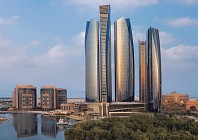“Darlin' it's better down where it's wetter, take it from me” – the immortal words of Sebastian from Disney’s The Little Mermaid. Apparently he was on to something, with decades of literature and cinema showing a sporadic, but keen, interest in underwater dwellings. Planet Ocean Underwater Hotel may not be as expansive as the Gungan City from Star Wars, or as secluded as Bond nemesis Dr. No’s underwater lair, but it’s luxurious enough for an affluent traveller with a taste for adventure of the aquatic kind.
The hotel has concept has now received patent approval and developers are looking to commence construction with Egypt, Malaysia, Hawaii and the Bahamas, which have all named as preferred locations. The 12-room luxury hotels could cost around $19.7 million and would sit 8.5 metres below the surface. Guests will enter and exit hotels through an elevator from the surface to the submerged accommodations, which means there’s no need to enter the water, nor will scuba gear or certifications be required.
On completion, guests would spend their 18x12-foot underwater guest rooms complete with king beds, en-suite baths, luxurious furnishings, multimedia entertainment centres and – fear not – WiFi. The views from the “aqua pods” will offer multi-dimensional views of the surrounding underwater features, aquatic life, and will be partially illuminated from surface light, sweeping through the clear waters. The Florida-based developer boasts it is unaware of any other underwater hotel concept can be implemented, deployed, completed, and replicated anywhere in the world as quickly, inexpensively, and cost effectively as a Planet Ocean Underwater Hotel.
"I refer to it as inner space tourism, and the new industry is now ready to launch into the ocean frontier," said Tony Webb, responsible for the hotels' design, adding, "the philanthropic goal is to give back to the planetary community through Biorock coral reef restoration of the world's endangered coral reefs."

The hotel is technically classed as a vessel because it can navigate ocean waters using electromechanical propulsion technology










